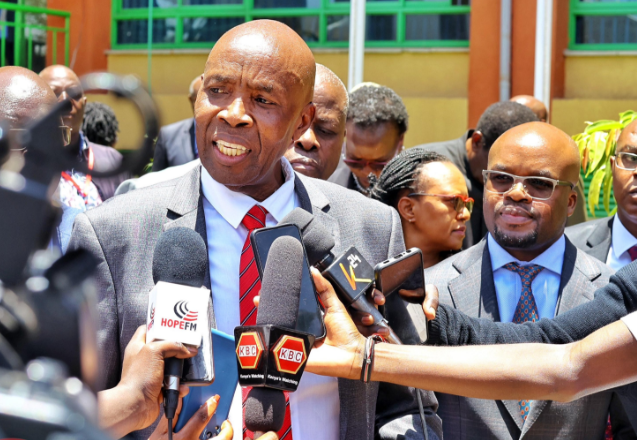State must support students to join high school

The results of the last batch of Kenya Certificate of Primary Education (KCPE) 8-4-4 students have just been released. This sets the stage for the Ministry of Education’s annual ritual of placement of students into secondary schools.
The 2023 KCPE cohort had 1,406,7 students. All these students are headed for Form 1 to start their secondary education. This is because the Government instituted a 100 per cent transition policy for all students in primary school.This is a critical policy that seeks to address wastage, where students drop off at Standard 8, ending their schooling.
The universal transition policy means that all students in Kenya will be prepared for a career path since all of them will achieve Form 4 qualifications.
Form 4 opens the door to tertiary education in universities, Technical and Vocational Training and Education (TVET), and commercial colleges. It also keeps students longer in school, which has been determined to produce better outcomes.
However, this universal transition policy has come under serious strain in recent years because of poor students being stuck at home due to lack of fees. Students unable to proceed to secondary school threaten all the objectives of the policy of universal transition.
The KCPE 2022 cohort that was scheduled to enter Form 1 in January 2023 was particularly affected. This year has been a particularly tough year for Kenya’s economy. A whole term later, and thousands of students were still stuck at home with their dreams in tatters.
The economic crisis in the country has, if anything, worsened, even as Government works to rejuvenate the economy. The economy is buffeted by a deluge of challenges ranging from near crippling debt obligations, rapidly depreciating shilling, rising inflation, and streaking cost of living epitomised by rising food and fuel prices. To make the situation even more dire, the El Nino rains have wreaked havoc across many counties in Kenya, displacing families, destroying houses, washing away food crops and animals, and leaving a wasteland in its wake.
It is clear that the situation in 2024 intake will be worse than 2023. The Government must intervene, otherwise thousands of students will not make it to Form 1!
The Government must prepare for this looming crisis. The place to start is to undertake a countrywide mapping exercise to identify all the needy families with students who sat their KCPE last year, and who definitely will not have the means to send their children to Form 1.
The Government has the machinery to undertake a rapid survey through chiefs, nyumba kumi, and the administrative structure. Once this mapping has been done, the Government will now have a definite scholarship figure to work towards.
To prepare for this, the Government should then boost the well-established funds that have been playing the role of distributing bursaries over the years. These include bursaries at the national level, county government level, and the Constituency Development Fund.
Some form of co-ordination will be necessary to ensure efficiency and speed in identifying beneficiaries and disbursing the monies.
There have been very commendable efforts by corporates in recent years that have made a major impact in sending poor students to Form 1. More corporates should step up!
The effort to ensure the 100 per cent transition works must be a one-Kenya effort, and everybody with capacity to do so must come on board. It is the country’s future that is being secured here. Form 1 is the point at which the country intervenes to determine to create a cohort of young people with a future, or allow them to descend into desperation, thuggery and prostitution. The choice is that stark!
The time to move is now. The Government knows that every one of those 1.4 million students will be placed. So, no need to wait until the selection is done. By then, it will be too late.
—gathukara@gmail.com







